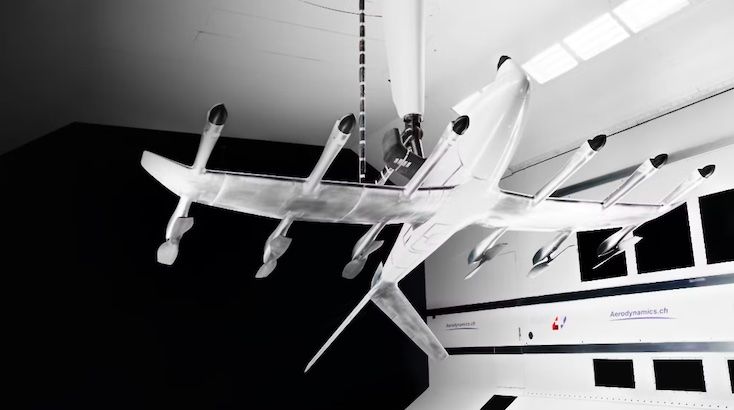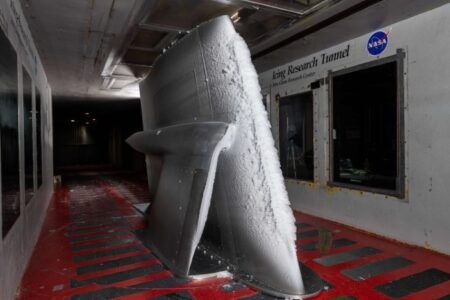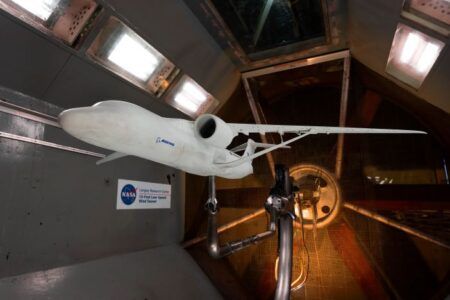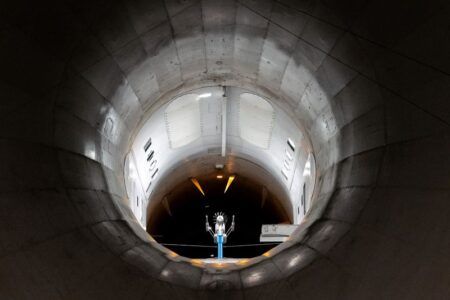Archer Aviation has recently completed a six week long wind tunnel test campaign of its Midnight eVTOL aircraft at the RUAG Large Subsonic Wind Tunnel in Emmen, Switzerland.
The five-seater Midnight eVTOL aircraft uses a proprietary twelve-tilt-six propeller configuration and has been developed for short-distance trips of around 20 miles (32km) with a charging time of approximately 10 minutes in-between. Midnight has a maximum range of 100 miles (160km).
Archer plans to certify Midnight with the FAA in “late 2024” and then operate it within an urban air mobility (UAM) network it plans to launch in 2025.
This campaign follows on from previous campaigns carried out at the Politecnico di Milan, Italy where propeller performance and propeller airframe interactions were investigated; at the University of Florida, USA for acoustic toolchain validation and the University of Notre Dame, USA where wing, tail and propeller airfoil performance validation testing was conducted.
This testing at RUAG’s wind tunnel enabled engineers to gather valuable data to further validate the Midnight vehicle’s configuration, such as its aerodynamic models, external load predictions, aircraft performance, stability and control characteristics and performance degradation in icing conditions.
The 27.6% scale model of Midnight used in the tests was made by German company DeHarde and featured a wingspan of over 13ft (4m). The size was chosen to maximize test data similitude and correlation to full-scale, while fitting within the 5m x 7m (16ft x 23ft) test section of Ruag’s wind tunnel.
The aim of the test campaign was to develop a comprehensive dataset to validate Archer’s engineering design tools and to confirm the aerodynamic predictions of our Midnight design.
Overall, 878 measurement sweeps were made by varying model angle of attack and sideslip and capturing force and moment trends for over 400 different model configurations. These model changes included varying control surface deflections, adjusting forward boom tilt angles, and stepping through an airframe component build-up. This build-up started with a bare wing/fuselage and then successively added booms, landing gear, tail, and stopped lifter propellers. This build-up approach allowed us to investigate and clearly understand the incremental effects of each airframe component.
Data for validating CFD predictions of the overall Midnight aircraft performance in cruise, including vehicle drag by airframe component, high-lift capability and stall speeds were collected during the testing..
Archer said, “Of particular interest was exploring those conditions where airflows are unsteady and difficult to predict analytically with high accuracy. We collected extensive data on vehicle stability and control derivatives, which relate changes in forces and moments with aircraft states.
“This data validates the cruise stability characteristics of Midnight and is a major input to the design of the airplane’s control logic and anchors flight simulation models to accurately represent the true airplane’s behavior.
“Finally, data necessary to correlate and substantiate external loads predictions were collected and will be used to validate the loads that size the aircraft structure.”
According to the company, cruise drag predictions correlated well with the test data, validating its confidence in Midnight’s range and the maximum lift capability of the aircraft came better than we predicted.
Measured stability characteristics reinforced that the V-tail, flaperons and ruddervators are correctly sized and that they have adequate aerodynamic control power, while also confirming that control surface hinge moments meet requirements and that our actuators are properly sized, the company said.
An upcoming wind tunnel test will next investigate the effects of the propulsion system on aerodynamic performance.





